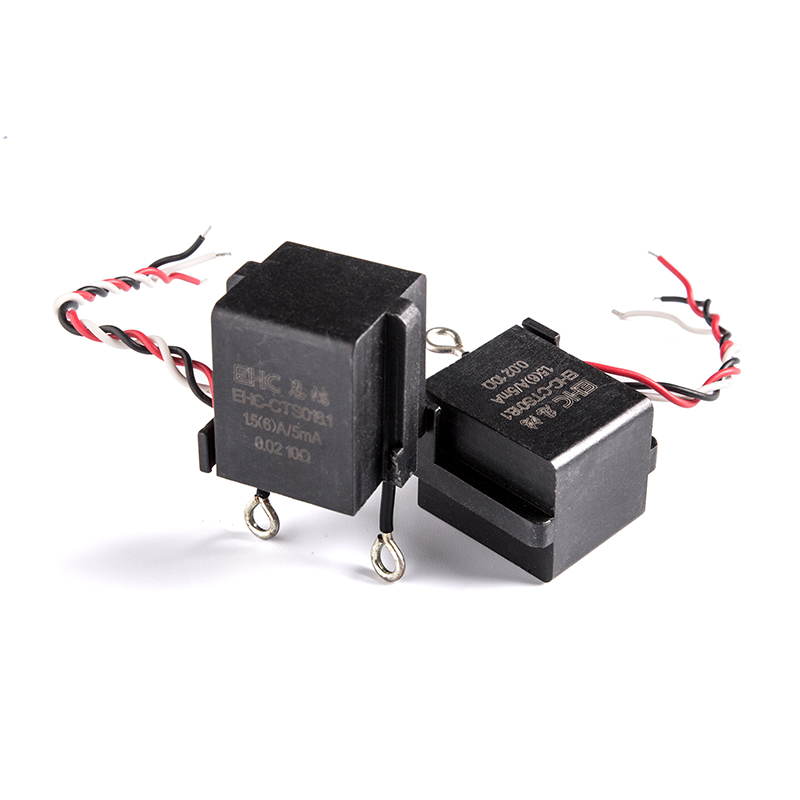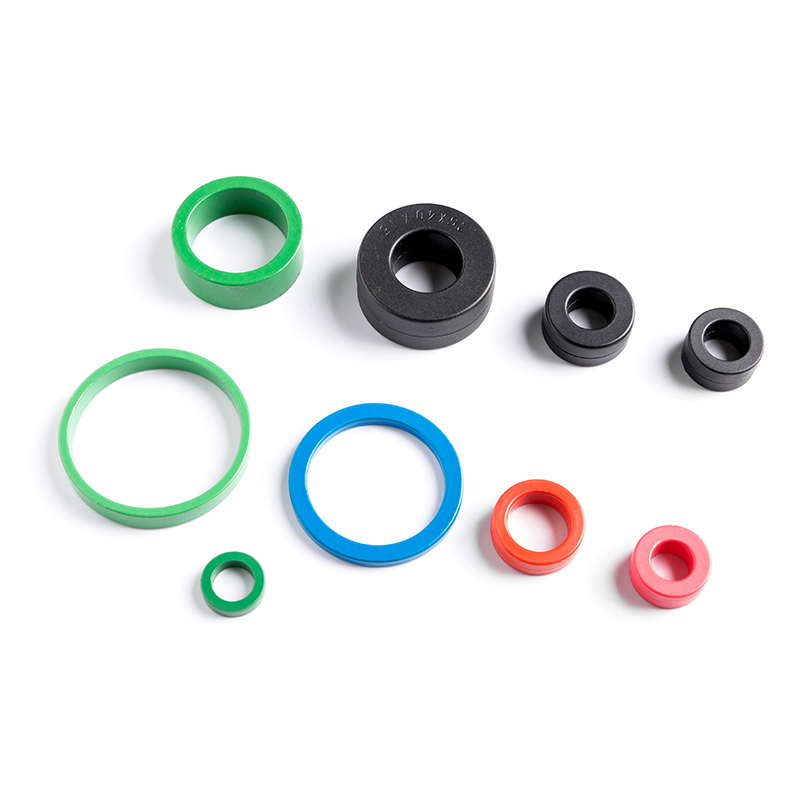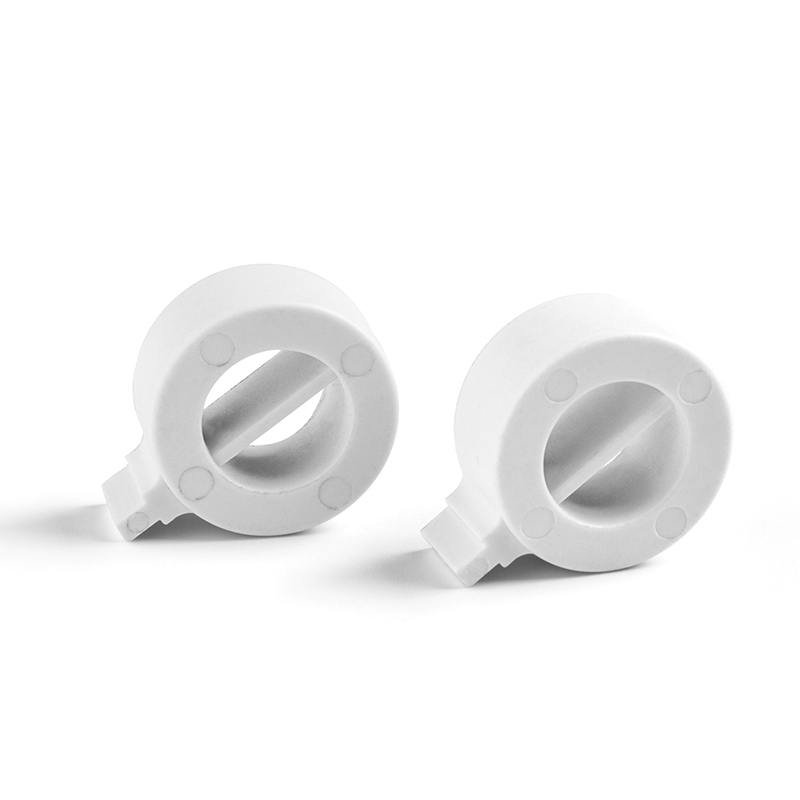High Efficiency: One of the primary reasons for selecting amorphous nanocrystalline cores is their exceptional efficiency. Core losses, which include hysteresis and eddy current losses, are significantly lower in amorphous nanocrystalline materials compared to traditional materials like silicon steel. This reduced loss translates to higher overall efficiency in transformers and inductors, particularly in applications where energy efficiency is paramount, such as power distribution systems or electric vehicles.
High Saturation Flux Density: Amorphous nanocrystalline cores offer higher saturation flux densities compared to traditional magnetic materials. This means that they can operate at higher magnetic flux levels before reaching magnetic saturation, allowing for smaller core sizes without sacrificing performance. In applications where size and weight are critical factors, such as aerospace or automotive electronics, the ability to achieve the desired magnetic flux within a smaller volume is highly advantageous.
Wide Frequency Range: The stable magnetic properties of amorphous nanocrystalline cores across a wide frequency range make them well-suited for applications involving high-frequency switching and power conversion. Unlike some traditional materials that exhibit significant losses or changes in behavior at higher frequencies, amorphous nanocrystalline cores maintain consistent performance, enabling efficient operation in applications like switch-mode power supplies, high-frequency transformers, and renewable energy systems.
Reduced Eddy Current Losses: Eddy currents induced in the core material can lead to additional energy losses, particularly at higher frequencies. The amorphous structure of nanocrystalline cores minimizes these losses by inhibiting the formation of large, continuous current loops within the material. This results in lower eddy current losses, contributing to improved efficiency and reduced heating, especially in high-frequency applications where eddy currents can be a significant source of loss.
Temperature Stability: Amorphous nanocrystalline cores exhibit excellent temperature stability, retaining their magnetic properties over a wide temperature range. This stability is crucial in applications subjected to varying temperatures or thermal cycling, such as automotive electronics, industrial machinery, and power distribution equipment. Maintaining consistent performance across temperature fluctuations ensures reliable operation and helps to extend the lifespan of the components.
Size and Weight Reduction: The superior magnetic properties of amorphous nanocrystalline cores allow for the design of smaller and lighter magnetic components compared to traditional materials. This size and weight reduction are particularly valuable in applications where space is limited or weight savings are critical, such as portable electronic devices, electric vehicles, and renewable energy systems. Smaller and lighter components also contribute to overall system miniaturization and improved portability.
Noise Reduction: In addition to improved efficiency, the lower core losses and reduced magnetostriction of amorphous nanocrystalline cores contribute to quieter operation compared to traditional materials. Magnetostriction-induced vibrations can generate audible noise in transformers and inductors, especially under load conditions. By minimizing these effects, amorphous nanocrystalline cores help to reduce acoustic emissions, making them preferable for noise-sensitive applications in residential, commercial, and industrial settings.
Environmental Considerations: Some amorphous nanocrystalline materials are environmentally friendly and free from hazardous substances such as lead or other heavy metals. This aligns with modern sustainability initiatives and regulatory requirements, making them a preferred choice in industries focused on environmental responsibility and compliance. Additionally, the longer lifespan and higher efficiency of amorphous nanocrystalline cores can contribute to overall energy savings and reduced environmental impact over the lifecycle of the equipment or system in which they are used.
Cost: While amorphous nanocrystalline cores may have a higher initial cost compared to traditional materials, the potential savings in energy efficiency and reduced size can justify the investment, especially in high-performance applications. Factors such as energy savings over the operational lifespan, reduced maintenance costs, and improved system reliability should be considered when evaluating the overall cost-effectiveness of using amorphous nanocrystalline cores.
Application Specific Requirements: Ultimately, the selection of amorphous nanocrystalline cores over other magnetic materials depends on the specific requirements of the application. Factors such as operating frequency, power level, size constraints, temperature range, environmental considerations, and cost limitations all play a significant role in determining the most suitable material for a given application. Engineers and designers must carefully evaluate these factors to ensure that the chosen magnetic core meets the performance, efficiency, and reliability requirements of the application while remaining cost-effective.
What factors influence the selection of amorphous nanocrystalline cores over other magnetic materials?
Recommended Products
-
 View More >>
View More >>
Non-Toroidal C-Type Cut Amorphous Nanocrystalline Cores
Industry: Amorphous Nanocrystalline Core
-
 View More >>
View More >>
EHC-VCT Series for Power supply
Industry: Current Transformer
-
 View More >>
View More >>
Transformers Cores Amorphous Nanocrystalline Cores
Industry: Amorphous Nanocrystalline Core
-
 View More >>
View More >>
Amorphous Nanocrystalline Inductor Cores
Industry: Amorphous Nanocrystalline Core
-
 View More >>
View More >>
CTS Series Terminal High Precision Amorphous Nanocrystalline Current Transformers
Industry: Current Transformer
-
 View More >>
View More >>
Rectangular hysteresis loop Cores
Industry: Amorphous Nanocrystalline Core
-
 View More >>
View More >>
High Linear Current Transformers
Industry: Current Transformer
-
 View More >>
View More >>
Common Mode Choke Amorphous Nanocrystalline Inductors
Industry: Amorphous Nanocrystalline Inductors

 English
English 中文简体
中文简体 Deutsch
Deutsch 日本語
日本語

